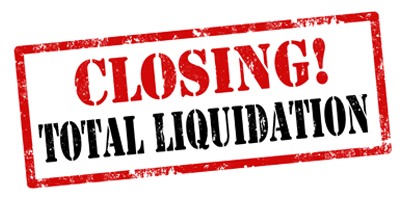The Ultimate Guide To Company Liquidation
The Ultimate Guide To Company Liquidation
Blog Article
Everything about Company Liquidation
Table of ContentsUnknown Facts About Company LiquidationThe Greatest Guide To Company LiquidationMore About Company LiquidationOur Company Liquidation DiariesSome Known Questions About Company Liquidation.
A liquidator is specifically designated to oversee the winding up of a company's affairs in order for it to be shut down normally when the business is going bankrupt. The liquidator is an objective 3rd party who oversees the sale of firm properties in order to settle any type of exceptional debts.Their role consists of, however is not limited to: Impartial Movie director: A liquidator is charged with serving as an impartial 3rd party to supervise the entire firm liquidation procedure. Create Declaration of Affairs: Liquidators must develop a detailed statement of events record. This record is distributed to financial institutions, outlining the present financial condition of business at the time of its liquidation.
After the liquidation of a company, its presence is removed from Firms Home and it ceases to be a lawful entity. If directors browsed the process without problem, there would be no charges or personal responsibility for firm debts expected. Currently, with a fresh start, supervisors can explore brand-new business possibilities, though professional consultation is a good idea.
The Best Strategy To Use For Company Liquidation
If even more than 90% of all firm shareholders agree, liquidation can take place on short notice within 7 days, the minimal legal notification for creditors. Typically, the bigger the liquidation and the even more properties and resources the organization has, the longer the procedure will certainly take. 'Do I need to pay to liquidate my firm?', the solution will certainly rely on whether or not your service has any kind of assets leftover when selling off.

We recognize that no 2 firms are the very same, which is why we will certainly put in the time to obtain to understand your service so we can suggest the best course of activity for you. We just operate in your benefits, so you can be totally certain in the solution we offer.
The Ultimate Guide To Company Liquidation
In the UK, there is a set procedure to closing down or restructuring a minimal business, whether it is solvent or insolvent. This procedure is referred to as liquidation and can just be handled by a qualified insolvency practitioner (IP) in conformity with the Bankruptcy Act 1986. There are four major sorts of firm liquidation process: Lenders' Volunteer Liquidation (CVL); Mandatory liquidation; Management; and Members' Volunteer Liquidation (MVL).

In these scenarios, it is essential that the company discontinues trading; if business continues to trade, the supervisors could be held directly accountable and it might result in the insolvency practitioner reporting wrongful trading, referred to as misfeasance, which might cause great site lawsuit. The supervisors appoint a bankruptcy practitioner and when this has actually been agreed and validated, there is a meeting with the shareholders.
Obviously, if there are no shareholders, this step of the process is not needed (Company Liquidation). The IP takes control of the firm and begins the company liquidation process. The directors are no more included in what occurs, consisting of the sale of the business's properties. If the directors desire any of the assets, they can inform the IP.
Some Ideas on Company Liquidation You Need To Know
The primary difference is that the firm's lenders applied top article to the court for an ending up order which compels the financially troubled company right into a liquidation procedure. In many cases, financial institutions take this action as a last resort due to the fact that they haven't received settlement with various other types of negotiation. The court appoints a bankruptcy professional, also understood as an official receiver, to perform the mandatory firm liquidation process.
This kind of company liquidation is not volunteer and directors' conduct is reported to the UK's Assistant of State once the liquidation procedure has been finished. For that reason, any kind of director that falls short to comply with the IP or has been associated with director misbehavior, or a fraudulent act, might cause major effects (Company Liquidation).
It is made use of as a way to secure the firm from any legal activity by its creditors. The directors of the business accept make normal payments weblink to settle their financial obligations over an amount of time. The assigned manager handles the voluntary administration procedure, and gets the settlements which they after that disperse to creditors according to the agreed amounts.
Everything about Company Liquidation
This supplies the business with time to develop a plan moving forward to save the business and avoid liquidation. However, at this moment, directors hand control of the company over to the appointed manager. If a firm is solvent yet the directors and investors intend to close the business, a Participants Voluntary Liquidation is the right alternative.
The business liquidation process is taken care of by a liquidator selected by the directors and investors of the company and they have to authorize a declaration that there are no financial institutions staying. The liquidation procedure for an MVL resembles that of a CVL in that possessions are understood however the profits are dispersed to the supervisors and the investors of the firm after the liquidator's costs have been paid.
Report this page